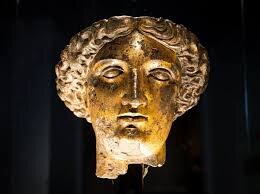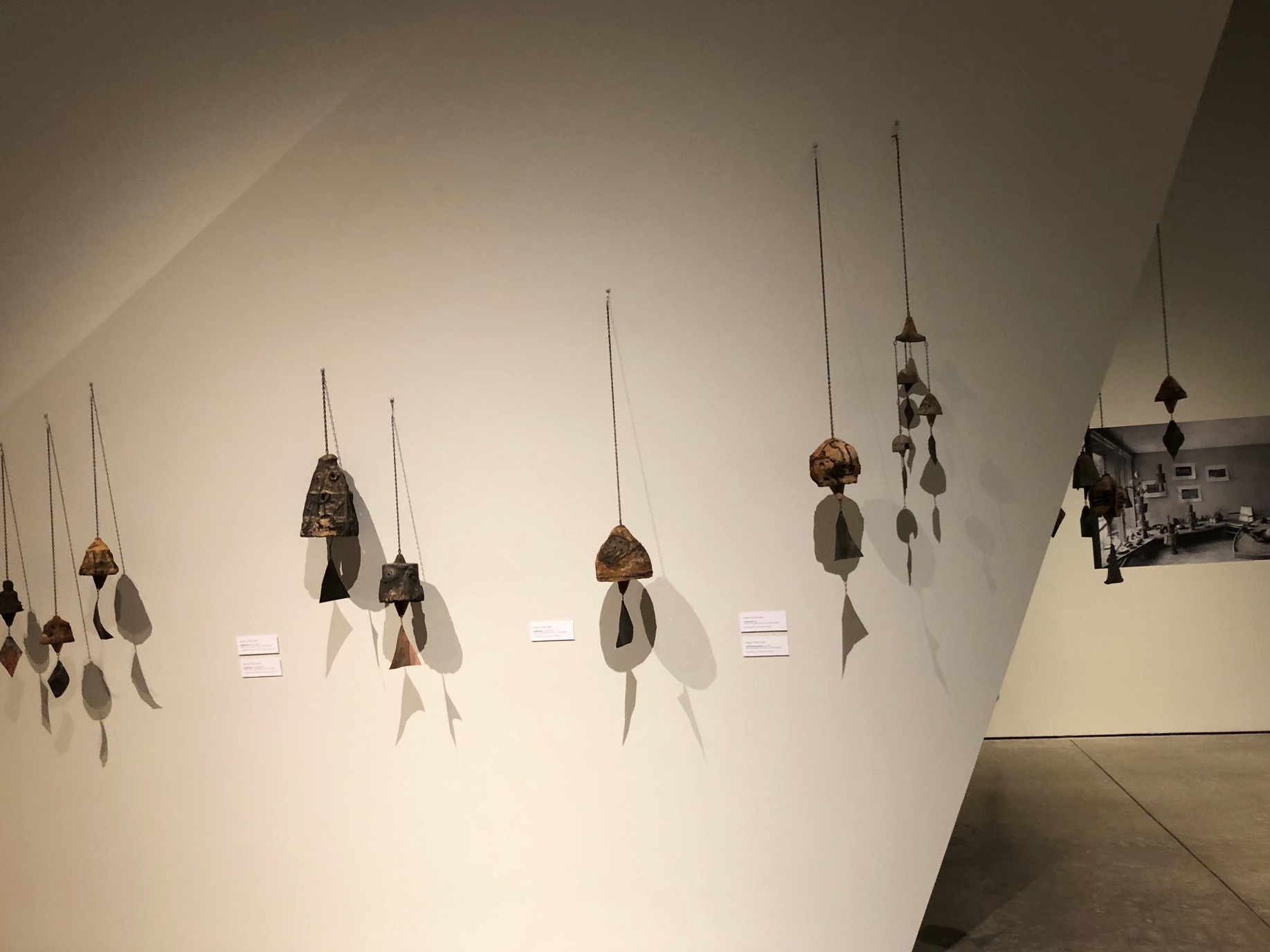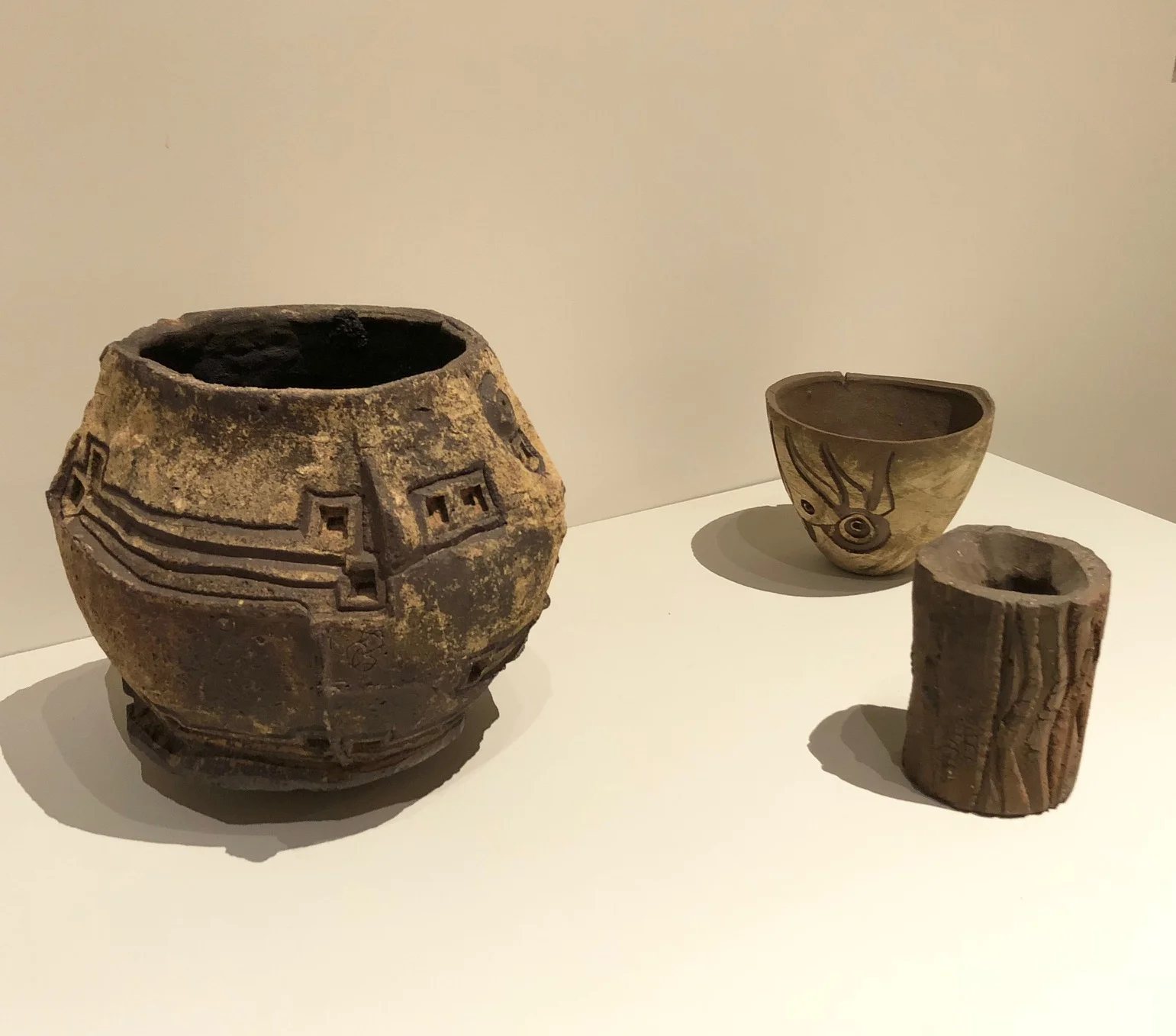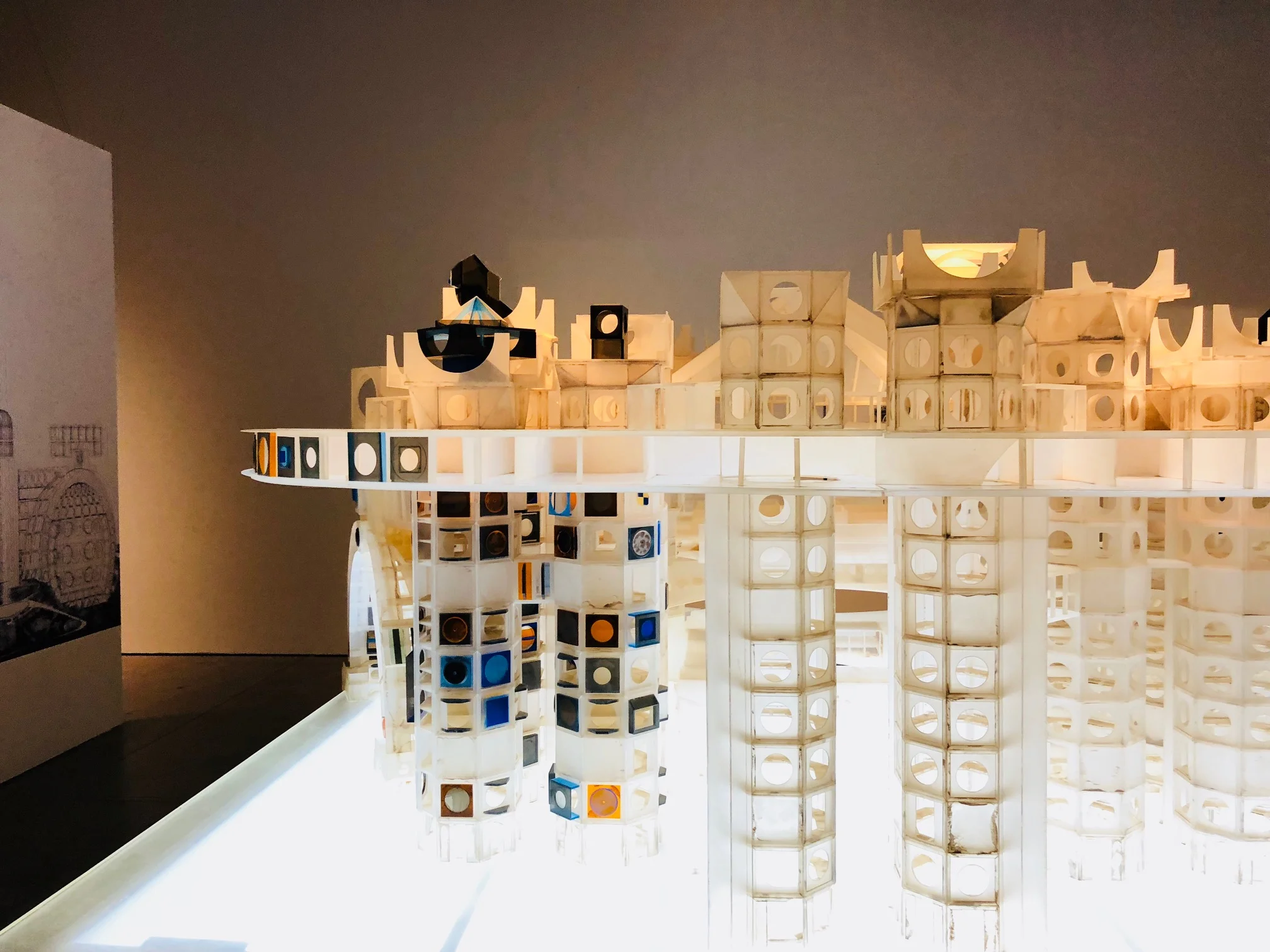Salvaged
Section of a Stencil from the face of the Main Ceiling Trusses of the Trading Room of the Chicago Stock Exchange Building 1893/94 designed by Adler and Sullivan and executed by Healy and Miller, The Art Institute of Chicago.
The trading room from the Chicago Stock Exchange was dismantled when the building was torn down and reconstructed at The Art Institute of Chicago. The building was torn down in 1972. It was designed by the famous Chicago architecture firm of Adler and Sullivan.
Natural Shapes
Teco Vase, early 20th century, Terra Cotta Tile Works - Teco.
Teco's matte finishes and organic shapes have become synonymous with the Prairie School movement. Frank Lloyd Wright had them produce some of his designs.
Star Dragon
Dragon of Marduk, Neo-Babylonian, Reign of Nebuchadnezzar II, Detroit Institute of Arts.
The Latin word for dragon, draco means both dragon and snake. This glazed brick representation of a dragon comes from Babylon of the fabled Hanging Gardens. The Staatliche Museen zu Berlin has recreated the Ishtar Gate which depicts many guardian animals, both mystical and real.
Home Office
Studio Reception Room, Frank Lloyd Wright Home and Studio, Oak Park IL.
Frank Lloyd Wright is the most famous American architect. His work changed the way Americans thought about the spaces they lived in and he continues to be a great influence today.
At Home with Nature
Fallingwater, 1936-38 by Frank Lloyd Wright, Bear Run, PA. Western Pennsylvania Conservancy.
Considered Wright's masterpiece, Fallingwater is found deep in the PA woods and was built as a retreat for the Kaufman family of Pittsburgh.
Tea Time
Ingram Street Tea Rooms by Charles Rennie Mackintosh et al.
Here is an example of Charles Rennie Mackintosh's architectural and Margaret Macdonald Mackintosh’s design work. His wife worked with him on his interior designs. Charles, Margaret, her sister Frances and Herbert MacNair all formed a design group known as "The Four."
Protection
Ara Pacis, Roman Temple built for Augustus, 30-9 BCE, Rome.
Built to honor Augustus' battles in Spain and Gaul, the Ara Pacis was built as a celebration to the power of the Roman Empire and "peace" their dominance brought to them. Over the years it was buried as the city grew and was finally excavated in the 20th century.

Across the Reflecting Pool
Abraham Lincoln from the Lincoln Memorial in Washington D.C.,
The memorial dedicated in 1922. Sculpture of Lincoln by Daniel Chester French.
Behind the Scenes
Mabel Tainter Memorial Building, 1889 by architect Harvey Ellis, Menomonie, WI
The style of this building is called Richardsonian Romanesque, but the architect was a strong behind-the-scenes influence on the American Arts & Crafts movement. Harvey Ellis worked with Gustav Stickley and has been credited with many of the company's furniture designs and undoubtedly influenced Stickley's Craftsman style.
Spas - Nothing New
The Great Bath, the Ancient Roman Baths, 1st Century A.D., Bath, England.
Built as a combination of a traditional Roman bath and an homage to the water Goddess Sulis Minerva, elements of the ancient baths were uncovered in the 17th Century, but it was not fully excavated until the 19th century.
Devotion
Detail, Taj Mahal, built between 1631 and 1654, India
Shah Jahan the emperor of the Mughal Empire built this monument to his favorite wife Mumtaz Mahal. This detail of a marble decorative frieze.
Utopia Too
Roycroft Campus, East Aurora NY
Much like Byrdcliffe, Roycroft was started as a self-contained Utopian community where its founder Elbert Hubbard envisioned a society of artists and crafts people living and working in harmony. It is a lovely place to visit and the Roycroft Inn is an Arts and Crafts lover’s paradise.
Beyond Floors and Bathrooms
Pewabic Pottery in the Guardian Building, Detroit
Detail from Pewabic Pottery tile decoration from the Guardian Building, 1928, Detroit MI.
Mary Chase Perry Stratton and her partner Horace Caulkins founded the Pewabic Pottery based on the Arts & Crafts style and ideal sweeping the country. The building they built in 1907 they moved to the building that still houses an active pottery, museum and store.
Pewabic Pottery Tiles the Guardian Building, Detroit.
I received this fantastic book as a gift and had to re-post the Guardian Building. Anyone who is into architecture will love it and Detroiters need to see it to appreciate gems in that city (before they disappear).
Fruits of Their Labor
The Strawberry Thief by Morris & Co., 1883 drawn by Philip Webb.
As William Morris and his family tried to grow strawberries at their home, Kelmscott, thrushes would climb under the barriers they erected and steal the strawberries.
Paolo Soleri in Arizona
Artist/architect Paolo Soleri studied at Frank Lloyd Wright's Taliesin West and with the famous architect himself, although Soleri's designs took on a more amorphic and almost insect-like look about them. The photos were taken by me at a retrospective of the artist at The Scottsdale Museum of Contemporary Art in 2018.
Soleri and his students started making bronze bells as a source of income and an artistic outlet. The bells can still be purchased at Cosanti.
Architectural model for Arcosanti, Mayer, AZ
Whose god?
Medusa or Gorgon, 1st Century A.D., From the Temple of Sulis Minerva at the Roman Bath in Bath, England.
This representation of the Gorgon Medusa was part of the pediment decoration from the Temple of Sulis Minerva at Bath. Sulis Minerva was a goddess of healing and the sulfur infused waters found at Bath were thought to have healing powers. Usually Medusa is depicted as a woman and this representation looks more like a man which makes it seem that it may be a mistaken attribution and that this representation might actually be of a river god from local folklore.
Head of the Goddess Sulis Minerva from Bath, England.
Final Exam
The Architect's Dream, 1840 by Thomas Cole, The Toledo Museum of Art.
On my final for intro to art history, I would always include this work which the students had not seen before and ask them to identify at least five styles of architecture - it was fun and a good way to end the exam.
Big Business
The Chrysler Building, 1930, architect William Van Alen, New York.
An homage to all things modern, the tallest building (until the Empire State eclipsed it one year later), decorated with hubcaps, hood ornaments and steel so shiny it looks like chrome. It remains an Art Deco Icon.
Red House
Red Hous, 1859 owned by William Morris, architect Philip Webb. Decorated by Morris & Co., National Trust, Bexleyheath, England.
A departure from the traditional Victorian style because it was open and full of light. Morris reaction to the industrial movement motivated him to hire artists and craftspersons to decorate the home and lead to the beginning of the arts and crafts movement.Interiors






































